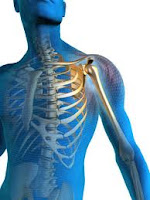Costochondritis diagnosis
How is the diagnosis?The diagnosis is made based on typical clinical history, findings on medical examination and the exclusion of other diseases.
The main symptom is pain in the chest wall of varying intensity and is often described as sharp, aching or pressure-like. The pain is eventually aggravated by movements of the upper body by deep breathing and physical exertion. Prior prolonged cough, severe bodily stress or physical activities that are charged to the arms, are common. Although costochondral joints often are inflamed, then each of the seven transitions Costochondral be inflamed. Pain may exist in several joints, but often state only on one side.
Pain that is recreated when the doctor pressing against the Costochondral parties in the chest wall, suggesting costochondritis. Movements in the arm on the sick side will often trigger pain one. It is particularly important to rule out that the pain stems from the heart Arch Intern Med 1994; 154: 2466-9. PubMed, 10 Miller CD, Lind sells CJ, Khandelwal S, et al ., an ECG heard so immediately. Sometimes the doctor will refer to X-ray of the chest.
Costochondritis treatments
What is the treatment?The condition is referred to be self-limiting. Any treatment aims to relieve pain. Current assets is as paracetamol and / or NSAIDs. Activities that trigger pain, should be limited. For example, cough suppressants be useful for troublesome cough.























